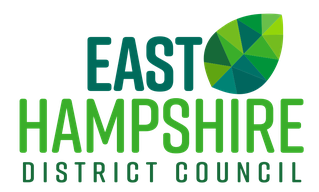The register provides details of previously developed sites that are considered suitable for residential development.
The preparation and publication of the register is governed by the Town and Country (Brownfield Land Register) Regulations 2017.
‘Previously developed land' is defined in Annex 2 of the National Planning Policy Framework (2021) as:
"Land which is or was occupied by a permanent structure, including the curtilage of the developed land (although it should not be assumed that the whole of the curtilage should be developed) and any associated fixed surface infrastructure. This excludes: land that is or was last occupied by agricultural or forestry buildings; land that has been developed for minerals extraction or waste disposal by landfill, where provision for restoration has been made through development management procedures; land in built-up areas such as residential gardens, parks, recreation grounds and allotments; and land that was previously developed but where the remains of the permanent structure or fixed surface structure have blended into the landscape.".
There is published guidance on understanding the brownfield land register.
How is the register structured?
This is the fifth version of the Brownfield Land Register for the district (excluding those parts of the district within the South Downs National Park).
Sites have been identified from the;
All sites have been identified from the Land Availability Assessment (LAA) 2024.
Legislation requires that the Brownfield Land Register be kept in two parts:
Part 1 of the register is mandatory and includes sites where the entire site area meets the definition of previously developed land, are of at least 0.25 hectares or capable of supporting at least 5 dwellings, and are suitable (appropriate for residential development), available (development is likely to take place within 15 years of the entry date on the register) and achievable for residential development.
It is important to note that entry onto Part 1 of the register does not guarantee that this site will progress onto Part 2 of the register or receive planning permission.
- Brownfield land register 2025 - part 1 (pdf 15 mb)
- Brownfield land register 2025 - part 1 (xls 21 kb)
- Brownfield land register 2025 - part 1 (csv 8 kb)
Part 2 of the register is optional and allows local planning authorities to select sites from Part 1 and grant Permission in Principle (PIP) for housing-led development, after undertaking necessary requirements for publicity, notification and consultation.
A PIP establishes the fundamental principle for development of a site in terms of its use, location and approximate number of homes that the site can reasonably accommodate.
A PIP is similar to an 'outline' planning permission. However, planning permission is not granted until Technical Details Consent is applied for and approved by the local planning authority.
The council at this time has not put any sites on Part 2 of the register.
Can I submit a site for inclusion on the brownfield register?
The register will be maintained and reviewed at least once a year to make sure it is up-to-date.
Sites can be submitted at any time using the form below.
- Site submission form (word 129 kb)
Once completed, please email the form to localplan@easthants.gov.uk.
New sites will feature in the next iteration of the LAA and Brownfield Register.
My site is included on the part 1 register, can I make changes?
If there are any changes to the site such as the site boundary please let us know and provide an up-to-date map with a brief explanation of any changes required. We also need to know if the site is no longer available so it can be removed from the register.
This can be done by contacting the planning policy team by email localplan@easthants.gov.uk.
Brownfield call for sites
During our local plan consultation, held between 22 January and 8 March 2024, respondents suggested that every opportunity should be taken to identify brownfield land for development.
We therefore asked residents to let us know of any brownfield land that is suitable and available for development. The call for sites was open from 7 May to 7 June 2024.
- Call for sites responses - July 2024 (pdf 543 kb)
